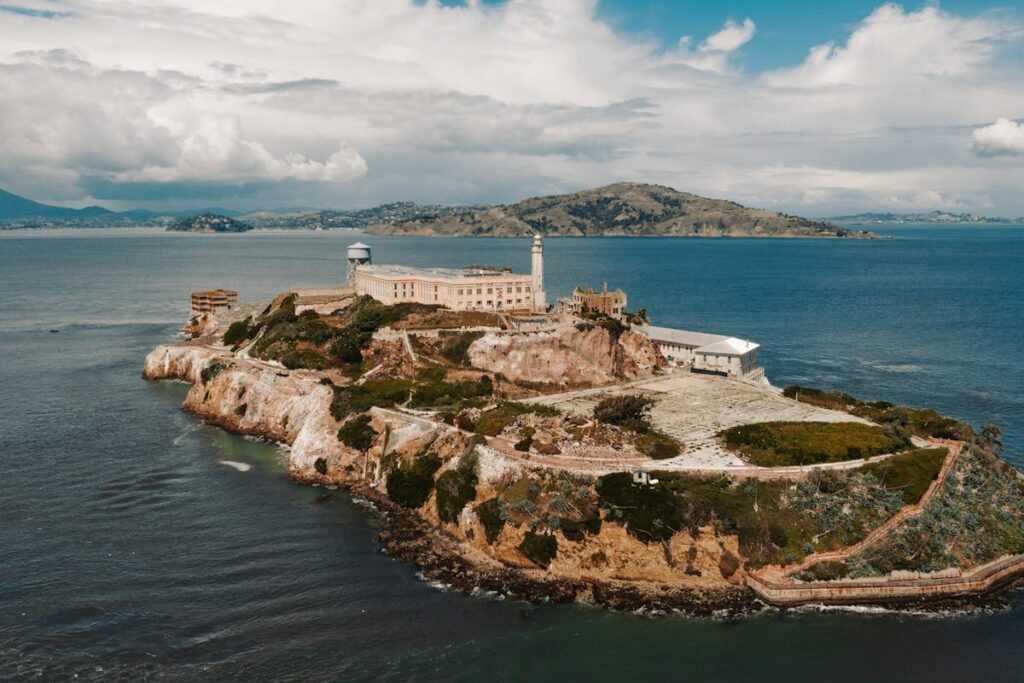Discover the rich history of Alcatraz Island, from its early days as an uninhabited rocky islet to serving as a military prison, notorious federal penitentiary.
Alcatraz Island is located 1.5 miles off the coast of San Francisco and has a rich and fascinating history that dates back centuries. Opened to the public in the fall of 1973, this national park site welcomes over 1.4 million visitors each year and stands as one of America’s most popular attractions.
In the mid-18th century, Spanish explorer Lt. Juan Manuel de Ayala named the island “La Isla de los Alcatraces” (The Island of the Pelicans). By 1850, a joint Army and Navy commission recommended a Triangle of Defense to guard San Francisco Bay. This led President Millard Fillmore to reserve lands around the bay, including Alcatraz, for “public purposes.”

The island’s role as a military prison began in 1857 and continued until 1933. Several notable events took place at Alcatraz throughout the years. These included the imprisonment of the Hopi Tribe members in 1895 for resisting forced education and land allotment programs. The Spanish-American War in 1898 caused prison overcrowding. This prompted the construction of the Upper Prison in 1900 and the Cellhouse in 1912. This was the largest concrete structure in the world, at that time.
In 1934, Alcatraz became the nation’s toughest and most feared federal penitentiary, housing infamous criminals. Al Capone, George “Machine Gun” Kelly, and Robert “Birdman of Alcatraz” Stroud were among these. Daily life on the island was harsh, with prisoners only given four rights: medical attention, shelter, food, and clothing; recreational activities and family visits had to be earned through hard work.


Alcatraz National Park
Alcatraz was permanently closed in 1963, due to high costs and deteriorating infrastructure. The remaining prisoners were transferred to a new maximum-security federal penitentiary in Marion, Illinois.
In 1969-1971, Mohawk tribal leader Richard Oakes led an occupation of the island by the “Indians of All Tribes,” which aimed to establish an American Indian cultural center on the island. Their actions remain a significant milestone in American Indian history, although their goal was not achieved.
Today, Alcatraz stands as both a historical landmark and a popular tourist destination. The award-winning “Doing Time” Digital Audio Tour provides visitors with firsthand accounts of life on the island from former inmates, correctional officers, and family members. Visitors can currently explore the restored Cellhouse Museum and Alcatraz Author Programs.
Featured Image by Kelly
